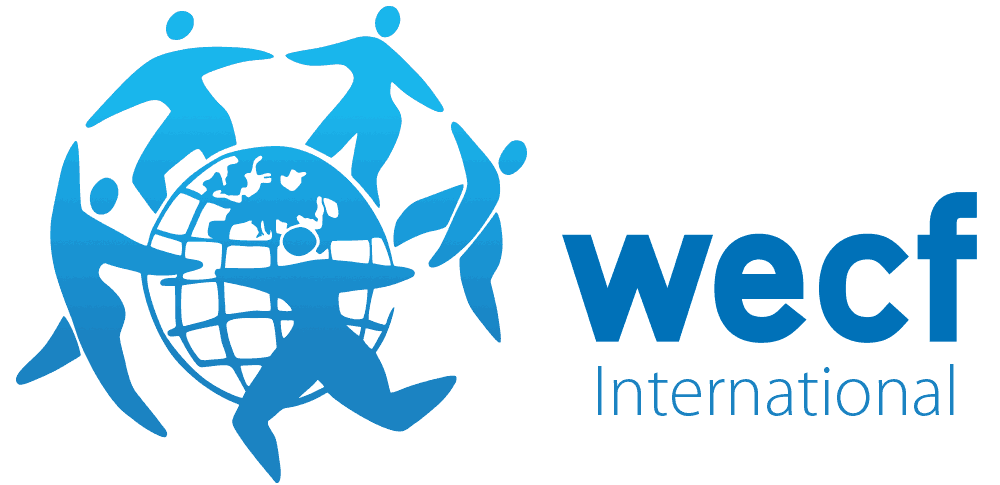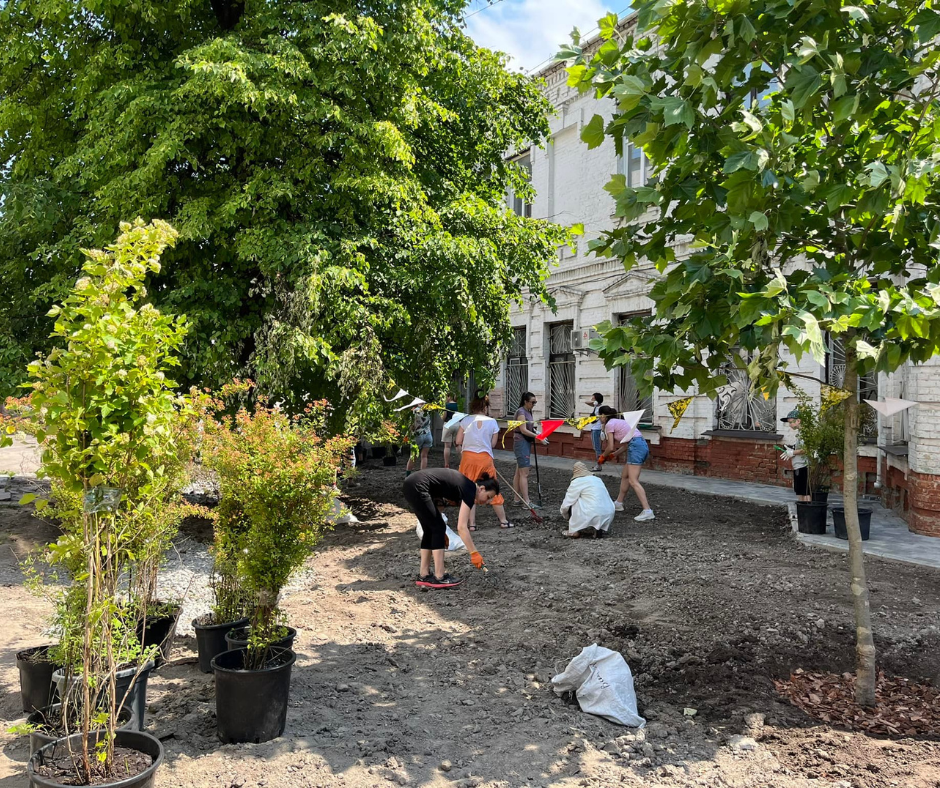Russia’s full-scale war against Ukraine leads to the constant destruction of buildings, thousands of people have already lost their homes, and the number of people with disabilities is increasing. As of November 2022, the total damage caused to Ukraine’s infrastructure is almost $136 billion.
However, Ukraine is already planning a post-war recovery. During it, it is important to create an accessible environment with available objects, information, and services. Such an environment must be adapted to climate change and have access to renewable energy sources. It also has to consider the needs of all populations, in particular, groups with reduced social mobility.
This article explains what universal accessibility is, why it is important, and how communities can achieve accessibility for all population segments during the post-war recovery.
What is accessibility and why is it important?
Accessibility is a general approach to the formation and implementation of state policy to ensure unhindered access of all population groups to various spheres of life. In other words, it is a sign that characterizes how a city or community is adapted and accessible for different population categories. According to the National Accessibility Strategy, at the first (basic) level there are the following types of accessibility:
· physical – availability of public infrastructure, premises, and public transport;
· information – availability of public information, an adaptation of notifications in the services sector, emergency services;
· digital – access to the Internet and digital skills, adaptability of public online services;
· social and civil – inclusive environment, absence of hate speech, equality of political and civil rights and opportunities.
The second level of accessibility is sectoral accessibility. It covers the development of sectoral strategic action plans in education, economic activity, health care and social protection. Note that the energy and climate industries must also consider accessible solutions.
Comprehensible information for all people is the basis for achieving accessibility. Here are some tips from Maryna Lebid, information, and physical accessibility researcher and executive director of the NGO “Pro.UD | Universal design”, on how to make information accessible:
– Present information in different formats. This is how you will consider the needs of people with vision, hearing, or mental disabilities. Use Braille, large print, audio description, translate materials into sign language and add subtitles.
– Place and format information based on its importance. This is especially important in times of continuous news flow.
– Make information easy to understand visually.
– Present the information as clearly as possible.
– Take into account different levels of education and linguistic skills.
Architect and urban planner Yevhen Boryseno gave examples of the application of universal design principles in the urban environment:
– Equality and accessibility of use.
– Flexibility of use.
– Simplicity and intuitiveness of use.
– The understandable presentation of information.
– Tolerance for mistakes.
– Little physical effort.
– Availability of the necessary size, place, and space.
“Accessible solutions in communities should become the new norm. For this, action plans for the implementation of the National strategy for accessible communities should also cover issues of equal access to information on energy conservation, adaptation to climate change, and the availability of renewable energy sources for different segments of the population. It is under such conditions that it is possible to resist the climate and energy crisis, to ensure the stability and inclusiveness of the post-war recovery processes,” says Nataliya Lushnikova, project coordinator of the Ecoclub NGO.
How cities can consider accessibility during recovery?
The post-war recovery must apply the principles of universal design. It will make the territory and the objects on it, which are being rebuilt or reconstructed, more comfortable and accessible for people, and will give them a new aesthetic look as well.
According to Olha Lyashchuk, Ecoclub project coordinator, during the reconstruction of a certain territory, the following decisions should be considered:
– formation of “green corridors” that will connect remote areas of settlements with the center. Such corridors should provide pedestrians with unhindered movement under the shade of green spaces;
– installation of public elevators;
– construction of accessible public toilets;
– equipment of public transport stops with protection from rain and sun;
– construction of convenient entrances to public premises, which takes into account the winter period (deicing);
– installation of tactile paving;
– arrangement of sidewalks above the level of the lawn to prevent soil erosion and form rain gutters along them.
– installation of garbage sorting tanks with protection from wind and precipitation,
– provision parking spaces with a water-permeable coating for groups of the population with reduced mobility.
How do cities use accessibility approaches and principles of universal design?
Rivne
Rivne is a city that is reconstructing its squares and streets according to the principles of accessibility. In 2022, a rain garden was created on one of the streets. It helped to reduce the possible amount of water caused by street flooding and made the space more accessible for residents.

Photo: Garden of Stories page on Facebook.
Pedestrian paths, placed above ground level, are also being reconstructed in the city. Thanks to this method, excess water does not accumulate on the roads, but flows off and falls into the ground. There are isolated examples of the formation of green zones that protect against road dust and form restrictions for the movement of cars.
The Rivne community is currently preparing the Sustainable Energy and Climate Action Plan (SECAP). Ecoclub assessed risks and vulnerability to climate change for this document. During the assessment, the impact of climate change on vulnerable groups of the population (less mobile groups, because they will primarily be affected by adverse weather phenomena – downpours, icing, flooding) is considered. Based on the results of the vulnerability assessment, Ecoclub has prepared a number of measures for adaptation to climate change, taking into account the needs of vulnerable groups.
The assessment showed that in Rivne it is necessary to develop alternative routes for public transport or emergency services during the flooding of streets or the felling of trees and branches. After all, the frequency and intensity of such phenomena will increase in the near future.
Also, the city has developed the Concept of “Rivne’s Green Corridors.” It describes the routes of the city that need landscaping so that residents can reach the center and remote areas under the shade of green spaces.
The city developed a concept for the reconstruction of Lake Basiv Kut. To do this, we conducted a survey and studied the needs of local residents:
“Later, architects developed the concept considering all the principles of accessibility. The plan is to create a sports ground accessible to all population groups. In particular, we are working on accessibility for people who suffer from combat operations. A convenient, accessible, and comfortable infrastructure can improve the psycho-emotional state of people”, says Oksana Maiboroda, a member of the Rivne City Council.
Slavutych
In 2020, the city of Slavutych joined the accessibility program and signed a memorandum on the development of accessible architecture within the initiative of the First Lady of Ukraine Olena Zelenska “Without Barriers.” Subsequently, the position of the city mayor’s adviser on accessibility issues was created. Before the implementation of universal accessibility measures in the city, residents were interviewed, and building audits were conducted. This made it possible to study the population’s needs and determine the state of the infrastructure. Based on the received data, an online accessibility map was created. It will contain a diagram of the pedestrian route, which was arranged according to the principles of universal design: low curbs, accessible public toilets, and ramps. The work is ongoing, so later they plan to lay tactile paving and install signs that are understandable for different population categories.

Lviv
In the city, t accessible urban spaces are mainly introduced by public initiatives that have the support of local authorities.
Among them, is the space of joint growth “Sensoteka” – a place for studying, spending leisure time, and communicating with other visitors. Free English language courses in inclusive groups, art therapy, artistic inclusive master classes, training and seminars are held there.

Photo: Sensoteka
As for physical accessibility, a striking example is the reconstruction of Dvirtseva Square. This project received an international award from the Institute of Transport Policy and Development Policy for sustainable transport mobility.


Photo: Lviv City Council.
The reconstruction led to the following:
– an increase in public transport infrastructure;
– an increase in the number of stops;
– installation of pavilions with seats and covers at public transport stops;
– separation of lanes for taxi drivers, private transport; public transport, and trams;
– the creation of pedestrian zone;
– an increase in landscaping;
– an increase in the park’s area;
– construction of underground parking;
– construction of bicycle parking.
We invite you to watch the webinar “How to make the “green” recovery of Ukraine accessible for all population segments.”
The article was written within the framework of the project ” Closing the loop: a just energy transition designed by capitals and regions,” funded by the European Union, and the project “Building the Ecofeminist Movement” supported by WECF International.













